This is the 69th in a series of posts on the Fujifilm GFX-50S. The series starts here.
There has been some discussion of the long-revered Zeiss 135 mm f/2 Apo Sonnar recently, and I was surprised to find that I’d never checked it for longitudinal chromatic aberration (LoCA) and focus shift. I have the ZF.2 version, so I could check it on the Nikon D810, the Sony a7RII, or the Fuji GFX 50S. I decided to check it on the Fuji, since it has been a good performer in visual testing. Stopped down a bit, it covers the whole GFX frame well, — wide open, it’s not bad, but wide open, it doesn’t even do a great job of covering the FF frame without a bunch of falloff. There is no evidence of smearing in the corners of the 33×44 mm frame, though there is some penalty over a FF camera in going that much further off the lens axis.
Here’s the setup:
- ISO 100
- Manual focus at middle of rail
- 160 mm rails travel
- Razor blade target
- Manual exposure
- Wescott LED panels set to 5500 K.
- Electronic shutter
- Cognisys computer-driven focusing rail
- 100 exposures 1.6 mm apart
- Target distance at the center of the rail, about 2 meters.
- RAF converted to DNG in Adobe DNG Converter
- DNG exported as TIFF mosaiced file in dcraw (document mode)
- TIFFs cropped and raw channels selected in Matlab program
- MTF50 of cropped TIFFs measured with MTF Mapper
- Data assembled in Matlab
- Data plotted in Excel
Here’s what a typical shot looks like, with the region of interest (ROI) marked in red:
The LoCA results at f/2:
What you are looking at is a standard measure of sharpness, MTF50, as measured in cycles per picture height (cy/ph) at the whole stops from f/2 through f/11. Each raw color plane (save the redundant green one) is plotted separately, so the distance along the horizontal axis is a measure of LoCA. You can also see which colors are focused sharply and which less so (the red is in the latter category in this case). Note that the distance that produces the sharpest green focus produces quite poor red focus. The depth of field is very low at this distance. It is entirely possible that I’ve missed the peak by 10% or more with the 1.6 mm steps.
The other whole f-stops through f/11:
At f/8, we are finally getting to the point where the depth of field is masking out the LoCA.
The conventional wisdom is that LoCA disappears as you stop the lens down. Actually, the LoCA doesn’t seem to change much, but its visibility is reduced because it’s masked by the DOF. Po-tay-to, po-tah-to, I guess.
Now we’ll put all the green channel curves on one plot to see how much focus shift we get as we stop the lens down:
This is truly remarkable. It doesn’t look like there is much focus shift at all. I’ve always focused this lens at the taking aperture until f/5.6, but it looks like I was sating my time. Let’s zoom in a bit:
You sure can see that there’s no data smoothing applied here. You can also see that focusing at f/2 will work just fine for all the f-stops through f/11. f/2.8 is the best f-stop, but any stop between f/2 and f/5.6 gives great results. And look at the numbers on the vertical axis! They are spectacular, and about what we got with the Fuji 110/2. This proves that the nose-bleed numbers we’ve been seeing with the Fuji lenses aren’t because the lenses are better than the best-of-the-best full frame lenses, but that the GFX microlenses are amping up the sharpness something fierce.
The last thing I’m going to show you in this post is the f/2 LoCA data near the peaks in tabular form:
The left column is distance in cm. The next three are red, green, and blue MTF50 values in cy/ph. Note how fast the values fall off from the peaks. If you want the most out of this lens, the DOF is almost literally paper-thin. You can also see that the real green peak is probably between the 6.4 and 6.56 cm samples. Oops. I see I put the green highlighting one square too high on the red channel.
Now we’ll look at the same data in cycles/pixel:
You ca see that the MTF50 peak for the green channel is almost 0.5, which is the Nyquist limit. These sharp lenses on this sharp sensor are a prescription for aliasing.


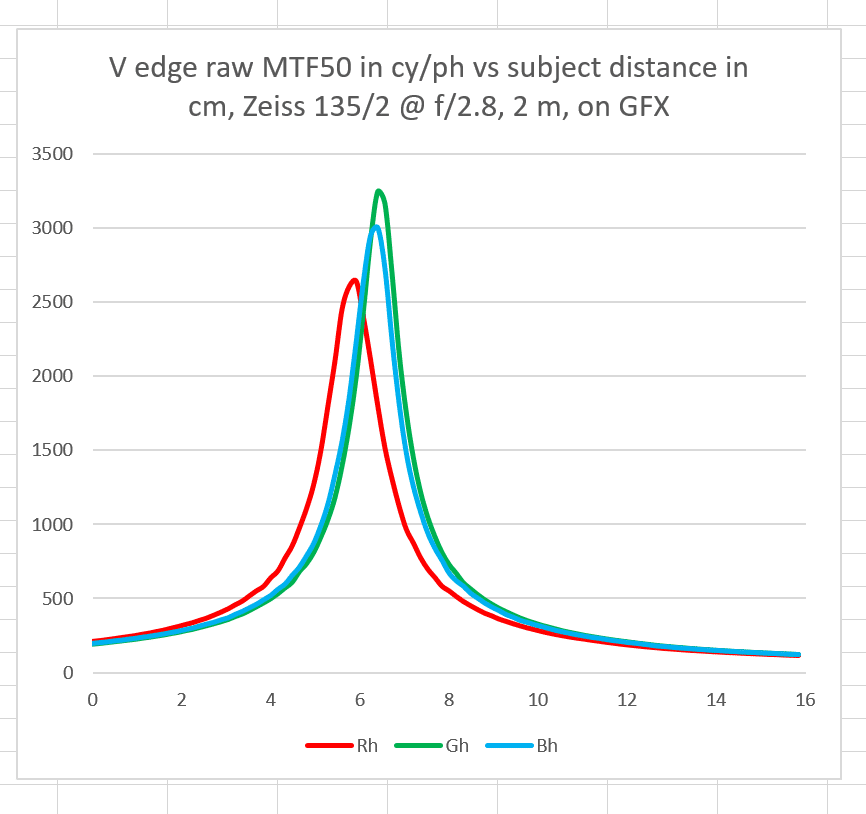
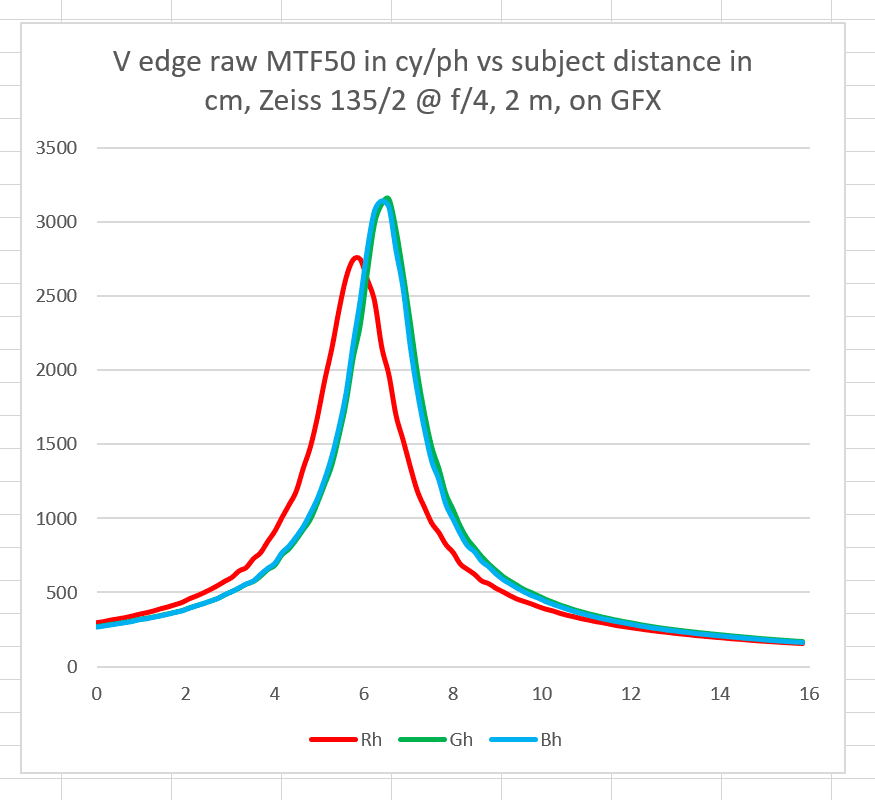
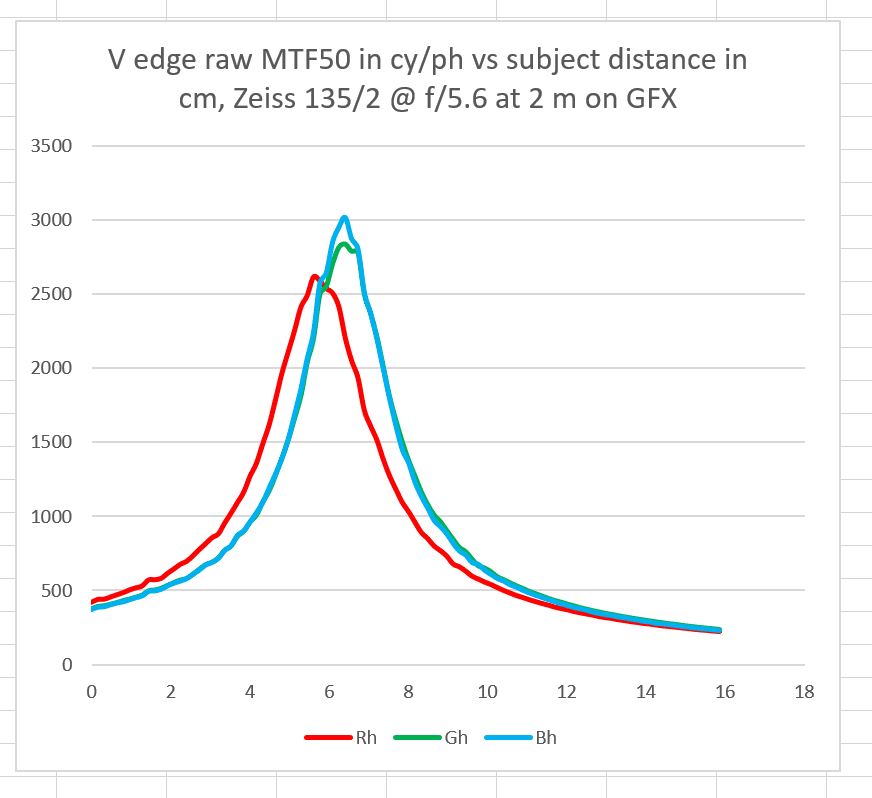
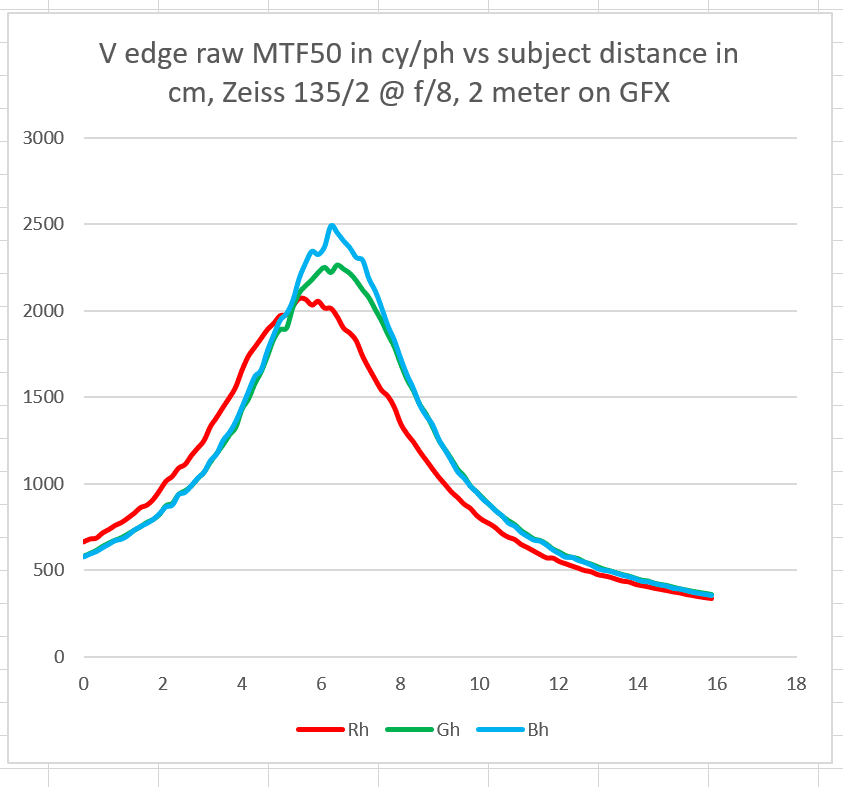
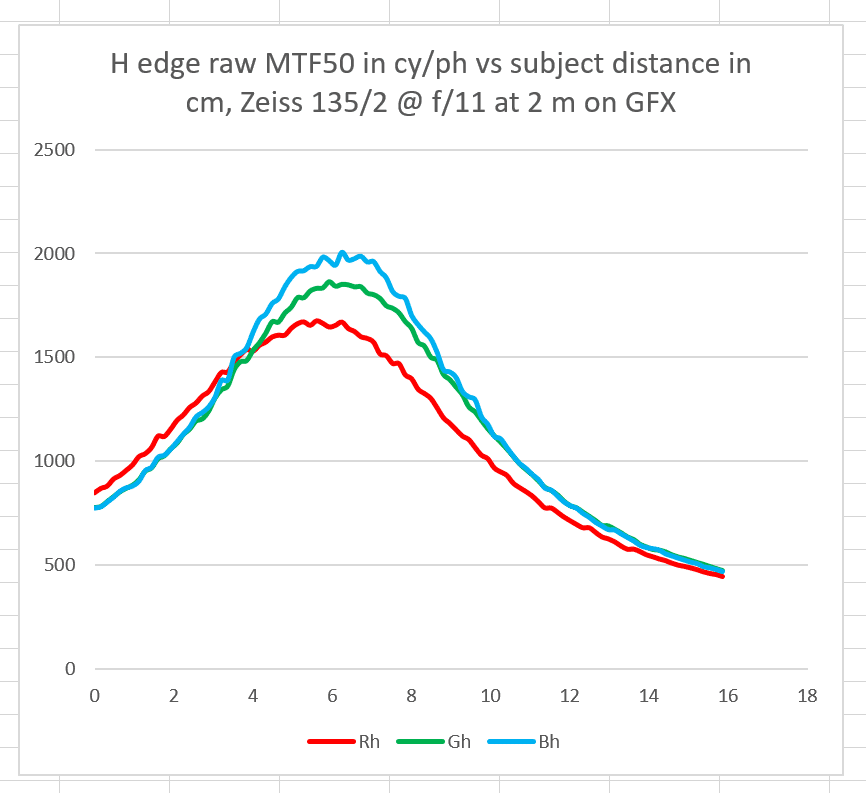
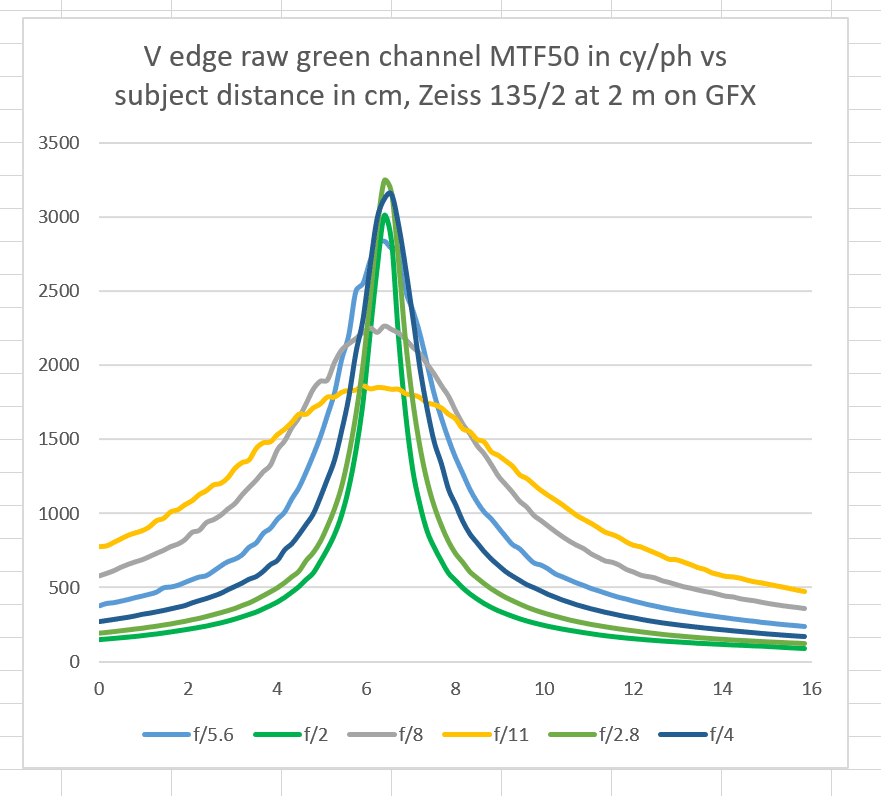
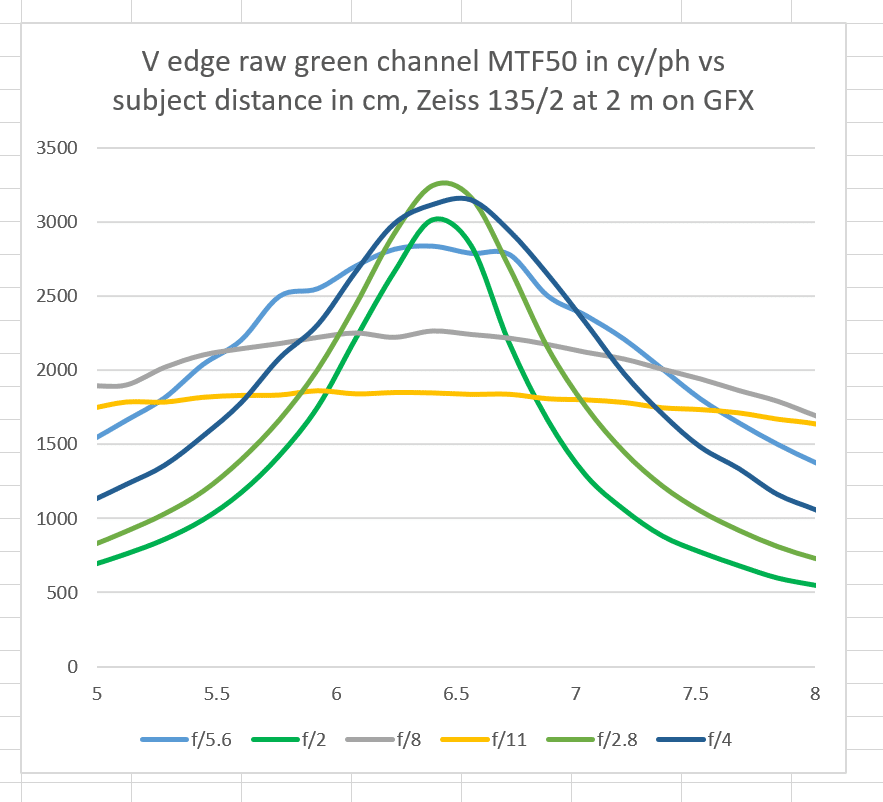
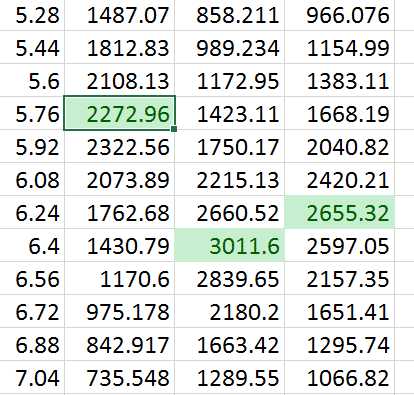
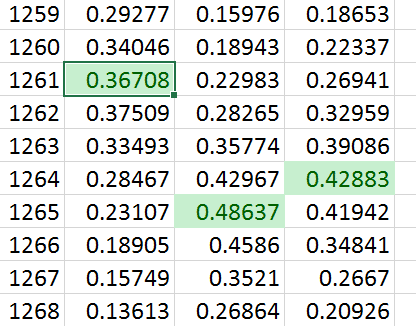
I tried my Zeiss 135mm/2 Apo Sonnar on the GFX and I was impressed with the images. I agree about the falloff wide open. However I got nice bokeh and very crisp center resolution that was close to what I observed with the Fuji 120mm macro at f4 and higher.
It’s the world’s cheapest Otus
Just wait a couple of month, Otus 135mm is comming… it’s a secret…
So far, all the Otus lenses have been f/1.4. Are you thinking the 135 you’re talking about will be that fast? If so, it might have the heft of something like the Nikon 200/2!
And would be the world’s expensive Otus ;-(
The remaining slot in my Otus case could hold a very large f1.4 135mm lens. But it’s not marked for such.
I love these LoCA tests. Nobody does them anymore but they used to be quite popular in photo mags in the late 70’s and early 80’s. Might have had something to do with the age of computer aided design which seemed to sacrifice LoCA for sharpness.
So which of these three you suggest for long distance landscape photography like mountains etc.
a.135mm apo
b.120mm f4
c.110mm f2
Thank you
That’s a tough one. I’d go with the 110/2, because it has better corner illumination than the 135 Apo.
What i saw from your comparrision 120mm macro is a bit sharper and punchier than 110mm at the center of the frame but 110 has more micro contrasr and bite at the corners.
So does it make 110mm a better long distance landscape lens than 120mm?
I tought 110mm is optimised for portrait distance but i guess it is not.
Thanks
I think so. The corners are important in landscape work.